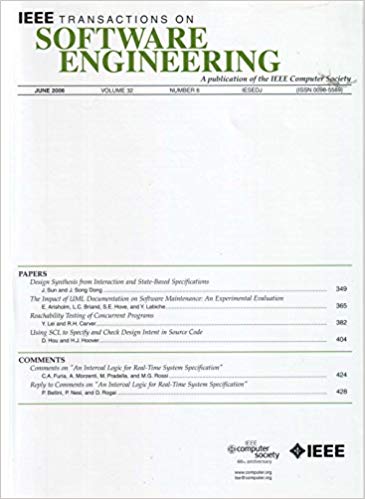ArchHypo: Managing Software Architecture Uncertainty Using Hypotheses Engineering
IF 6.5
1区 计算机科学
Q1 COMPUTER SCIENCE, SOFTWARE ENGINEERING
引用次数: 0
Abstract
Uncertainty is present in software architecture decisions due to a lack of knowledge about the requirements and the solutions involved. However, this uncertainty is usually not made explicit, and decisions can be made based on unproven premises or false assumptions. This paper focuses on a technique called ArchHypo that uses hypotheses engineering to manage uncertainties related to software architecture. It proposes formulating a technical plan based on each hypothesis’ assessment, incorporating measures able to mitigate its impact and reduce uncertainty. To evaluate the proposed technique, this paper reports an application of the technique in a mission-critical project that faced several technical challenges. Conclusions were based on data extracted from the project documentation and a questionnaire answered by all team members. As a result, the application of ArchHypo provided a structured approach to dividing the architectural work through iterations, which facilitated architectural decision-making. However, further research is needed to fully understand its impact across different contexts. On the other hand, the team identified the learning curve and process adjustments required for ArchHypo's adoption as significant challenges that could hinder its widespread adoption. In conclusion, the evidence found in this study indicates that the technique has the potential to provide a suitable way to manage the uncertainties related to software architecture, facilitating the strategic postponement of decisions while addressing their potential impact.ArchHypo:使用假设工程管理软件架构的不确定性
本文章由计算机程序翻译,如有差异,请以英文原文为准。
求助全文
约1分钟内获得全文
求助全文
来源期刊

IEEE Transactions on Software Engineering
工程技术-工程:电子与电气
CiteScore
9.70
自引率
10.80%
发文量
724
审稿时长
6 months
期刊介绍:
IEEE Transactions on Software Engineering seeks contributions comprising well-defined theoretical results and empirical studies with potential impacts on software construction, analysis, or management. The scope of this Transactions extends from fundamental mechanisms to the development of principles and their application in specific environments. Specific topic areas include:
a) Development and maintenance methods and models: Techniques and principles for specifying, designing, and implementing software systems, encompassing notations and process models.
b) Assessment methods: Software tests, validation, reliability models, test and diagnosis procedures, software redundancy, design for error control, and measurements and evaluation of process and product aspects.
c) Software project management: Productivity factors, cost models, schedule and organizational issues, and standards.
d) Tools and environments: Specific tools, integrated tool environments, associated architectures, databases, and parallel and distributed processing issues.
e) System issues: Hardware-software trade-offs.
f) State-of-the-art surveys: Syntheses and comprehensive reviews of the historical development within specific areas of interest.
 求助内容:
求助内容: 应助结果提醒方式:
应助结果提醒方式:


